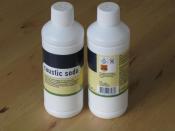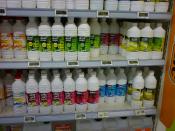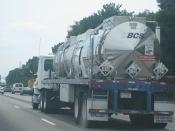Usman Omid Chemistry IB 1A
Enthalpy Of Solution
Introduction
Aim
The aim of this investigation was to determine the enthalpy of the solution created when dissolving Sodium Hydroxide (NaOH) in water (H2O).
Theory
When a solid ionic compound is dissolved in water a change of enthalpy is involved. The enthalpy of a solution, ÃÂHsol is the enthalpy change when one mole of the substance is dissolved in water to form aqueous solution. �
Chemical
Sodium Hydroxide (NaOH)
Procedure
The recommended amount of compound ito use is around 0.1 moles.
Add water into your caleriometer
Add the solid salt and stir the mixture thoroughly and continuously.
Calculate ÃÂHsol. Ignore the heat capacity of the caleriometer.
Results
Raw Data
Tab.1. The different data required for the calculations.
Trial | Mass of NaOH / g (ñ 0.001 g) | Volume of H2O / ml (ñ 1 ml) | Initial Temperature / ðC (ñ 1 ðC) | Final Temperature / ðC (ñ 1 ðC) |
1 | 3.954 | 50 | 19 | 39 |
2 | 4.027 | 70 | 19 | 33 |
3 | 3.991 | 80 | 19 | 31 |
4 | 3.988 | 100 | 19 | 28 |
One qualitative data that might have affected the results is that the Sodium Hydroxide (NaOH) seemed to start a slow melting process as soon as it left its container.
This was a qualified guess based on that it started to sparkle and looked like it was melting.
Another one that probably did affect the results was the fact that the containers in which we mixed the water (H2O) and Sodium Hydroxide (NaOH) in had holes. And this increases the energy lost to the surroundings in the form of heat, which affects the temperature. �
Processed Data
Calculations
Theory states:
ÃÂH= -Q/n
Q = m * c * ÃÂT �
Where in this case m =...



Excellent
I appreciate reading labs like these :)
0 out of 0 people found this comment useful.